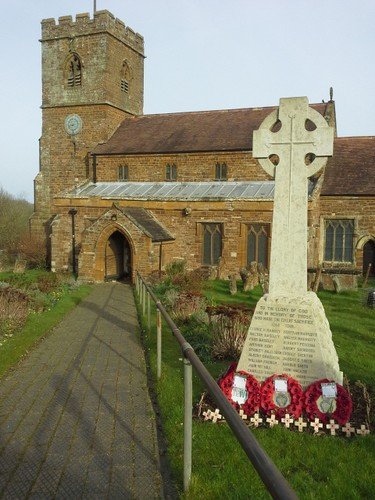St. Mary the Virgin Woodford Halse
St Mary’s church has been an important part of village life for many generations, although it can be difficult for a visitor to find. It is on the road turn as Church Street meets School Street (postcode NN11 3RA)
We would love to welcome you to one of our services. The usual pattern is a service of Cafe Church at 9.30am on the first Sunday of each month, and a service of Holy Communion at 11.00am on the third Sunday of each month. All are welcome.
If you would like to speak to us about baptisms, weddings or any other matters please do get in touch. Details can be found on the contact link, above.
St Mary's Church Calendar
St Mary the Virgin, Woodford Halse
History
Although substantially rebuilt in the late 19th Century, the church of St Mary the Virgin dates back to the 12thcentury. It lies at the heart of the village of Woodford Halse. The village is in fact a combination of three villages, which go under the collective name of Woodford cum Membris. This comprised the original medieval village of Woodford Halse, the adjoining village of Hinton – a settlement which grew largely during the late 19th to early 20thcenturies and the hamlet of West Farndon.
Although situated in a rural setting, the village has an industrial past, associated with the growth of the railway in the late 19th century. Woodford Halse was an operations centre for the Great Central during the early to mid 20thCentury and much of the village housing dates from the growth of the village at this time. Many of the older villagers worked on the railway or are descendants of railway workers. The railway closed in 1967 as part of the nationwide line closures executed after the Beeching Report. Many families faced unemployment, re-location or seeking new avenues for employment. The village mourned its sudden lack of transport links and felt an increasing sense of isolation. It suffered steep decline, from which it has only gradually regained a sense of confidence.
St Mary’s church is built of an attractive local golden brown limestone. The present structure dates in the main from the church’s reconstruction completed in 1878. Just prior to that the church had become virtually derelict. The reconstruction used much of the original material and some signs of the original building remain, most notably the south entrance, parts of the chancel and a pillar to the west end of the north aisle.
St Mary’s has long valued its bell tower. Originally there were four bells and a Sanctus bell. These were re-cast or replaced in 1613 with letters of the alphabet cast into them. In 1878 Thomas North writes of St Mary’s bells in his book “The bells of Northamptonshire”, stating that “This is the only instance of a complete ring of four alphabet bells I have met with.” In 1909 a fifth bell was added. But in 1975 the wooden bell frame was found to be unsafe. It was replaced by a metal frame and a sixth bell added. A ringing chamber was constructed, with a glass window to the west nave wall.
The bells are still rung regularly for benefice services and weddings. There is a weekly ringing practice which draws ringers from a wide area




